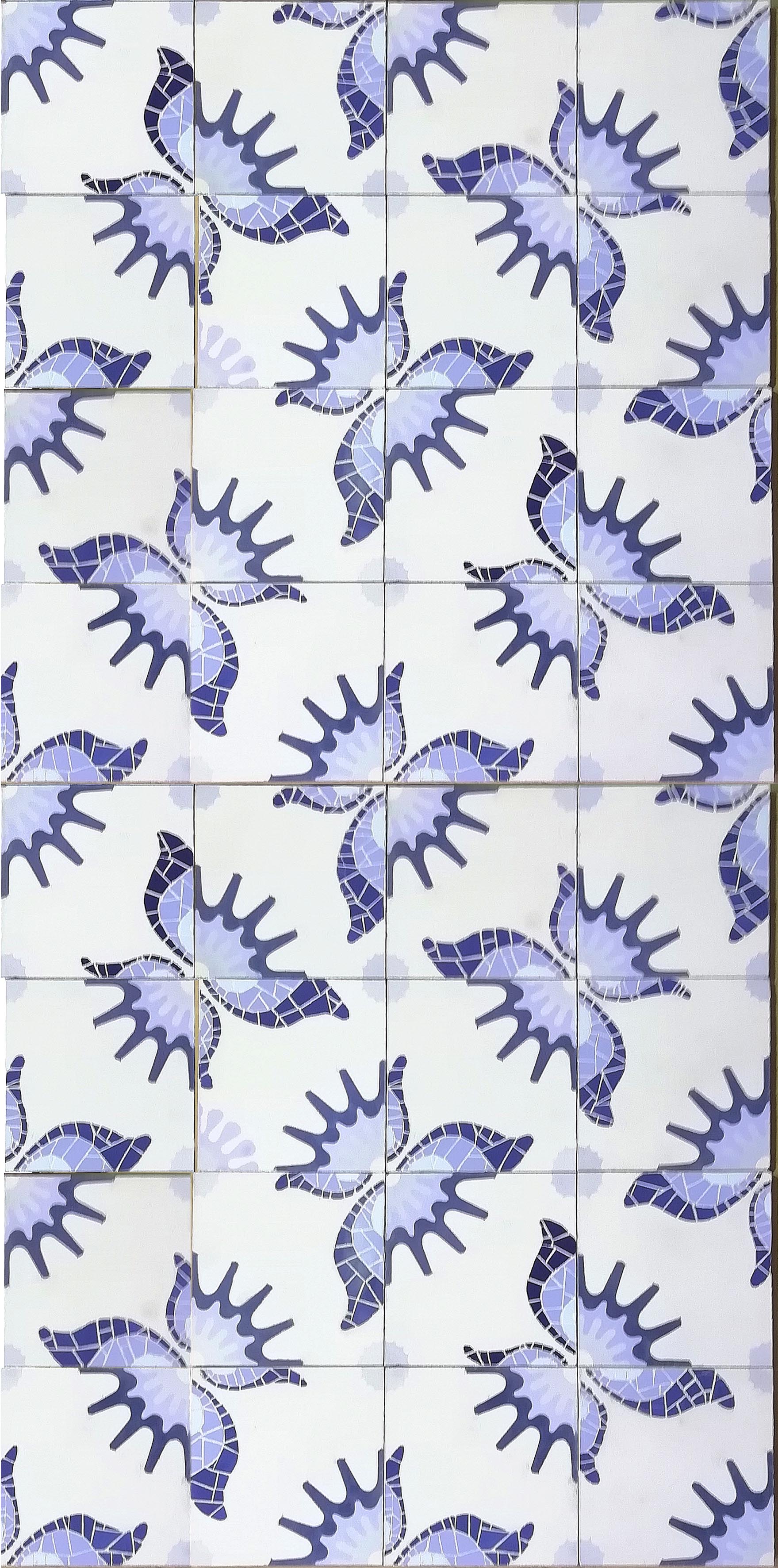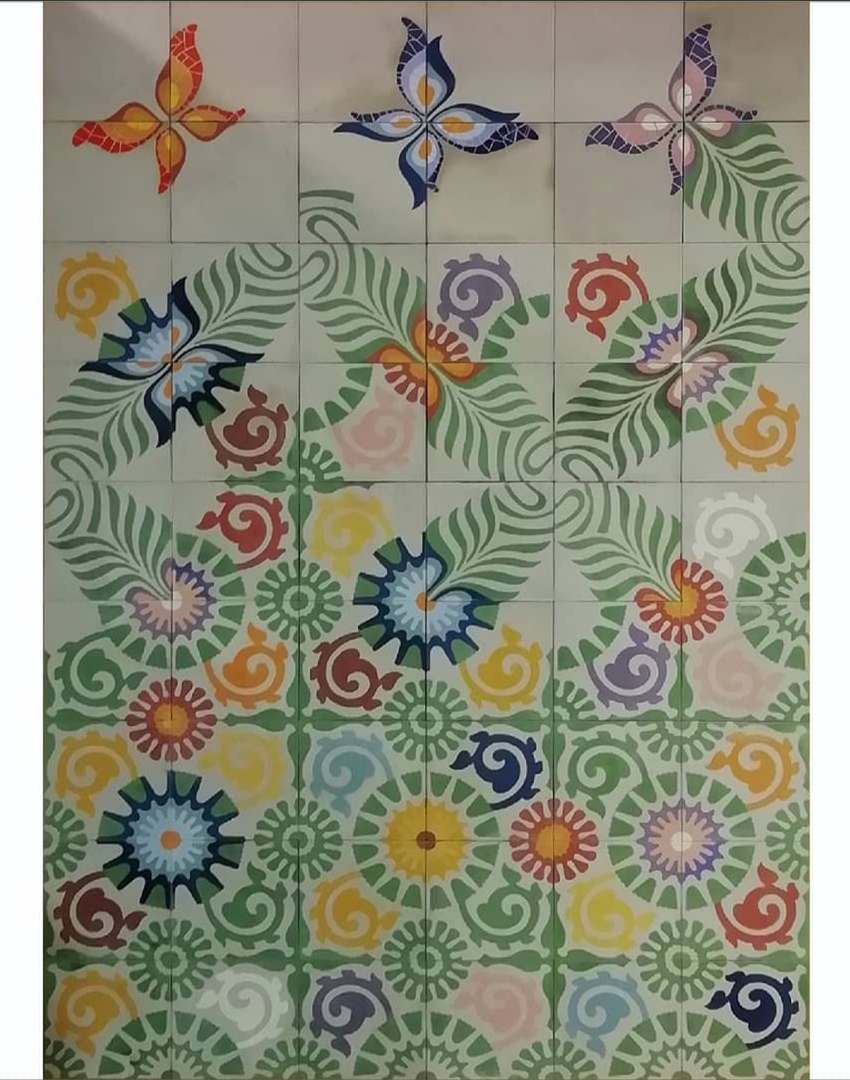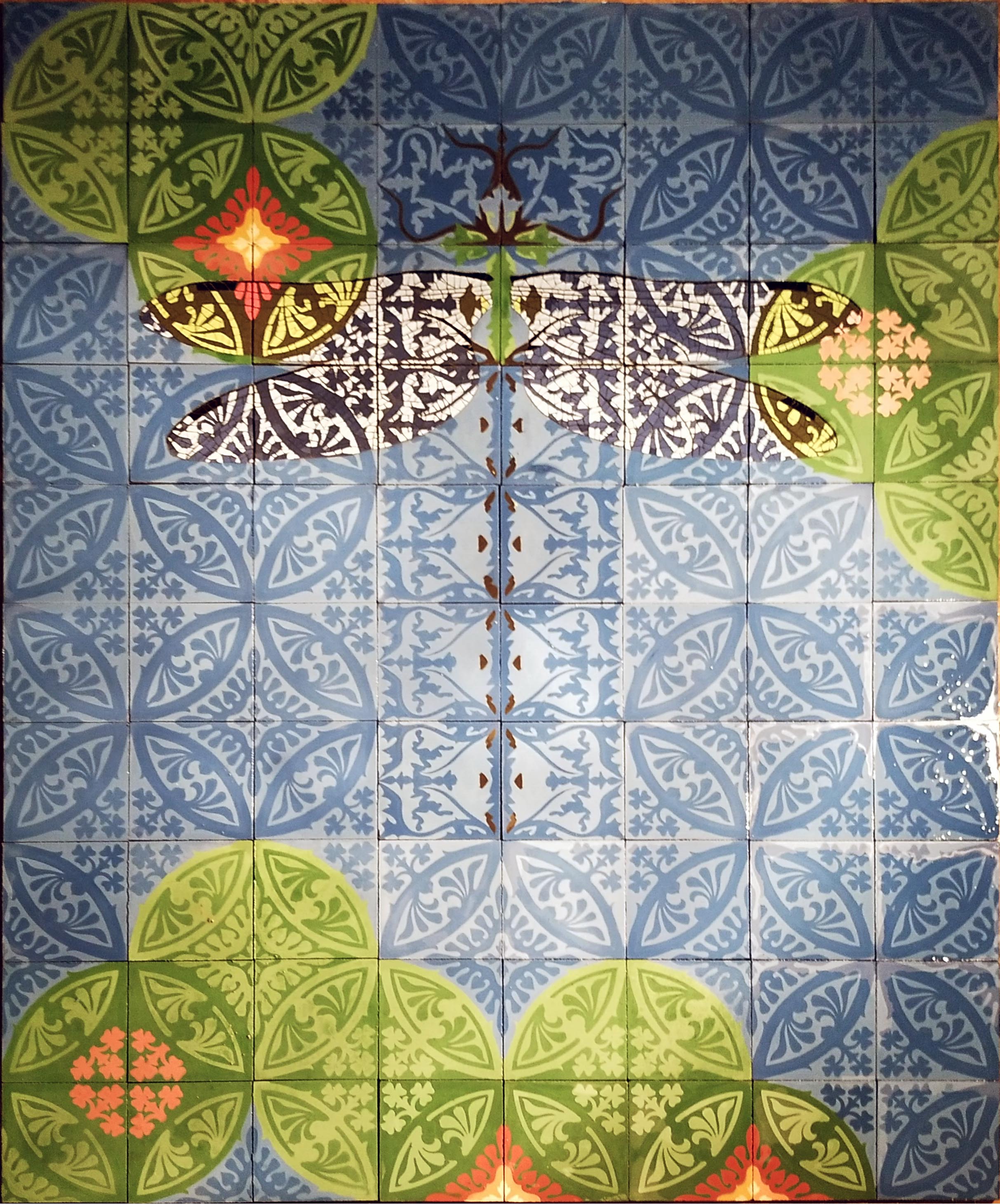The traditional cement tile (measure 20x20 cm) from the modernist era is still being produced and implement in contemporary projects. The tiles usually used in a repetitive way as pattern of one or part of 4 tiles combination, with or without a border.
Since 2016, I’ve been learning and practicing the fascinating technique of producing cement tiles. The intense monotonic rhythm of the work provoked an internal impulse to break the traditional tempo and create an evolution in the rhythm of the design.
This lead me to an ongoing research for innovative ways of producing cement tiles. The initial experiment was to manipulate the design. By placing identical colours in adjacent areas within the mold, it enabled to visually eliminate the borders.
not long after mathematical game of various molds, colours and composition took place and expanded the possibilities. A moment of epiphany came following an imperfect tile production of a flower mold.
When breaking the tile, in-order to reuse its materials, I’ve noticed that one of the fractures of the design resembled a butterfly’s wing. At that instant I had an urge to give the butterfly wings, but none of the existing molds had the necessary design to do that.
It became clearer that this is the meeting point of mosaics and tiles, and the birth of the “Trencadis Cement Tile” that allows the butterfly to spread it’s wings and fly. The innovative technique of “Trencadis Cement Tile” consists of implementing mosaic pieces into the cement tile during the production process.
The trencadis allows the freedom of expanding the design and create new unique imagery. The visual relationships between the cement tile and the trencadis sparks texture, reflections and imagination that leads to a world of endless possibilities for integration of art, space and life.
The concept of winged insects drove me to further my investigation and brought me to the discovery of dragonflies. Their majestic transparent wings fascinated me due to their incredible resemblance to trencadis pieces.
The habitats of the dragonfly must be in proximity to fresh water, which plays a vital part in their lifecycle. Based on this fact, the design focused on finding specific molds that can imitate a habitat of a swamp, decorated with Water Lilies craving for the visit of the Blue Emperor.
The enormous dragonfly design is done in a way that allows true appreciation of the detailed beauty. The trencadis creates the illusion of transparency of the wings, as the creature hovers above the water.
Dragonflies have two lives, they spend one of them as virtuoso aviators and the other is lived secretly underwater. The underwater lifecycle stages are: egg, nymph, and emergence.
Dragonflies spend most of their lives in their nymph stage. Nymph development takes one or two years during which the dragonfly moulting 5–14 times until it is fully-grown and is ready to emerge out of the water.
During the delicate trencadis work, I found great similarity between the dragonfly metamorphosis and my own process. The trencadis period proceeded 14 weeks until the 12 pieces were ready for their implementation.
The emergence of the dragonfly as a cement tile required another separation layer which marks an accurate area for the trencadis. The final work depicts a modernist point of view on the mixture of two worlds of crafts that have been separated.
The decorative elements consist of richness of forms that create depth and complexity. The unity of all the parts allows to treasure the exact moment when the dragonfly becomes one with it’s habitat.
By comprehending the traditional use, design and production of tiles I am able to change the familiar repetitive patterns and create a scenery of visual adventure. This contemporary connection creates the metamorphosis from the traditional tile to the new trencadís tile.
Conceptual growth inspires movement. A space with movement is a space with life.






